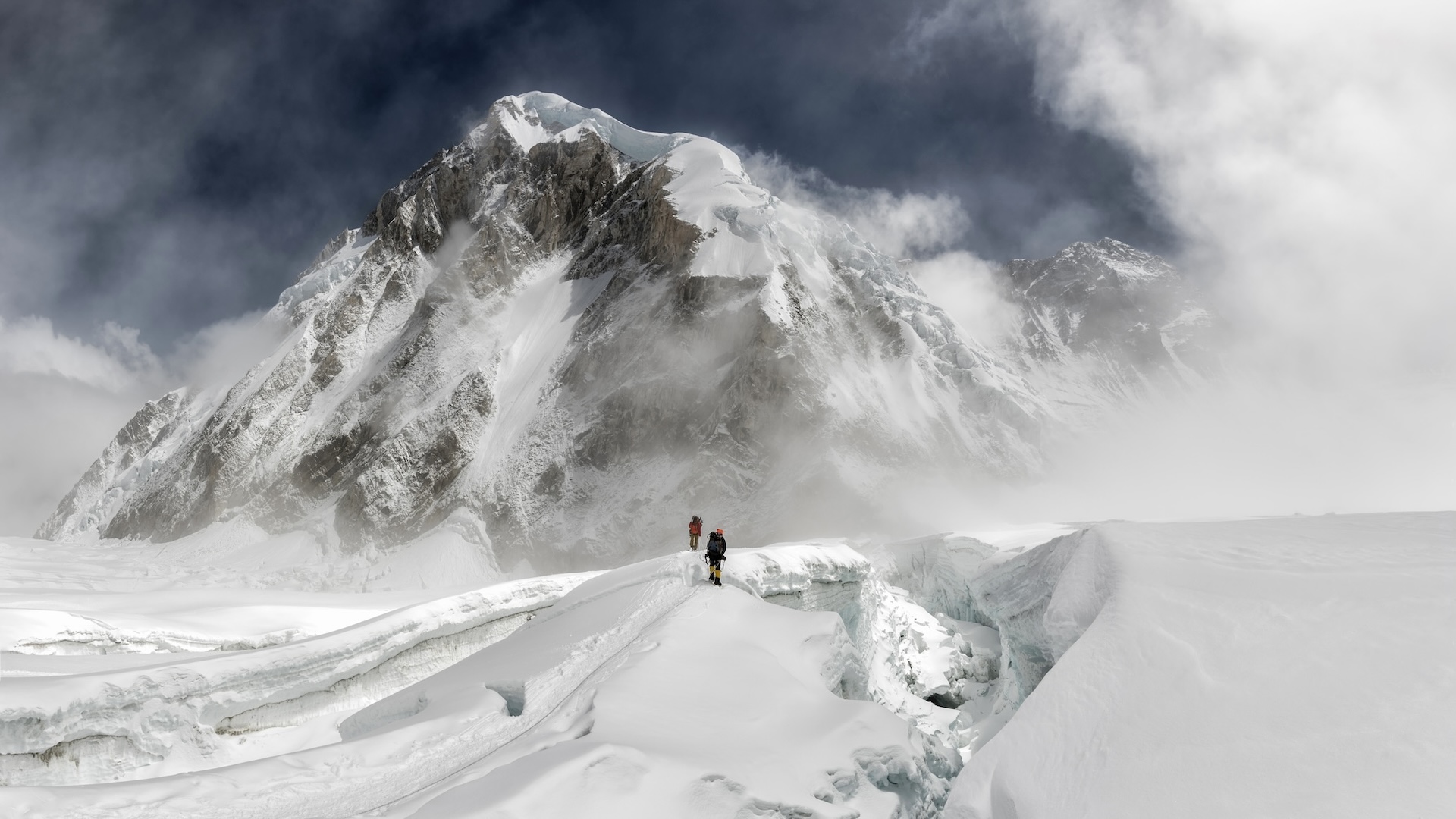The best camping tents: for superb backcountry adventures
We round up the very best camping tents, shelters that won't let you down on your vacations and backpacking missions
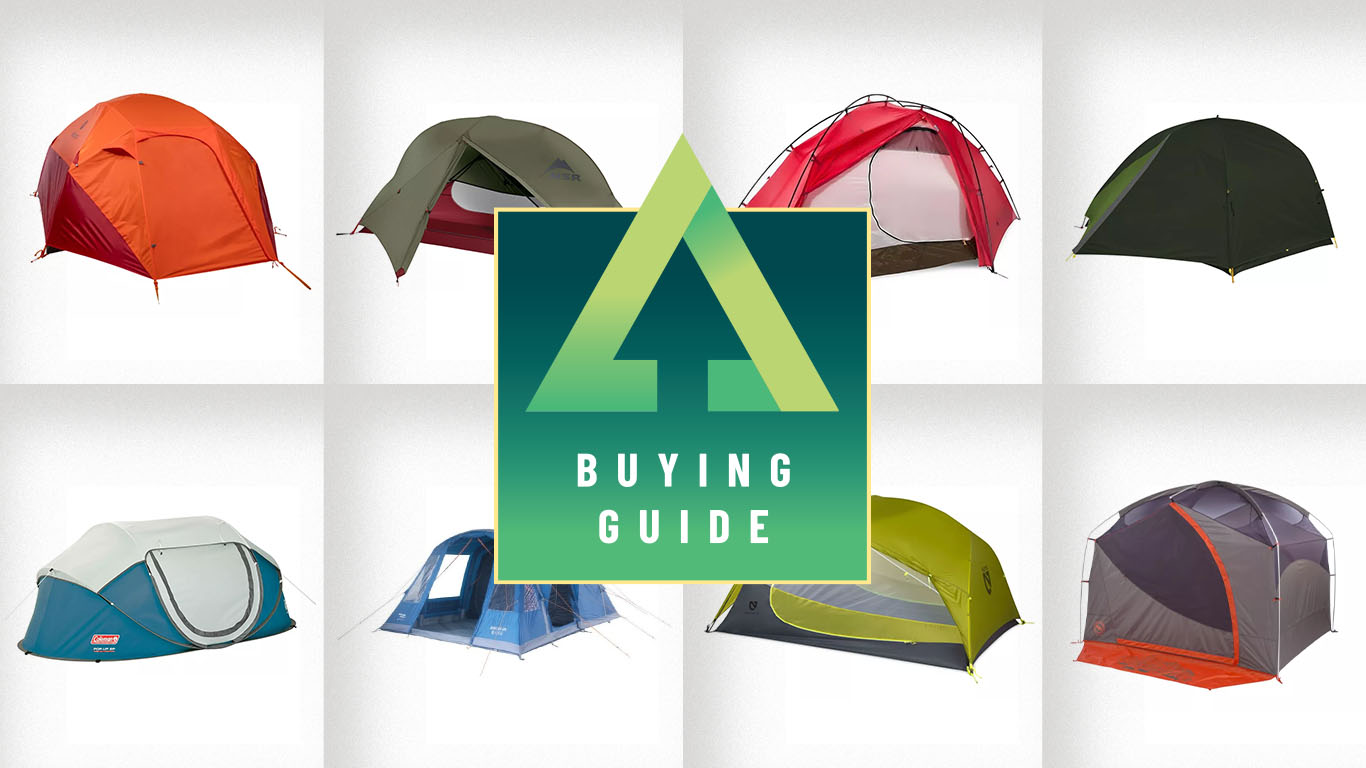
The best camping tents come in all shapes and sizes. From small but sturdy shelters for wild backpacking missions to palatial air tents fit for family vacations. In this guide, we've compiled eleven of our favourite shelters that we have had the pleasure of sleeping in.
From family tents for those car camping trips and pop-up tents for the summer festival season, to backpacking tents for wilderness expeditions, we've got you covered. Each of the best camping tents we've featured are of quality construction, will keep the elements at bay and come with the kind of innovative features that make the difference on any camping trip.
Of course, with styles being so varied, it's hard to cram in the best of every kind of tent. If you're after a fortress of fabric for the fam, check out our comprehensive guide to the best family tents.
Couples and backpackers may be after something a little smaller – our best two person tents and the best one-person tents buying guides will take you through the highest-performing shelters in those categories. Wild campers in particular will want something that's lightweight and packable, qualities that aren't quite as important as if you're just looking for a small shelter for the campsite.
Tents for the family
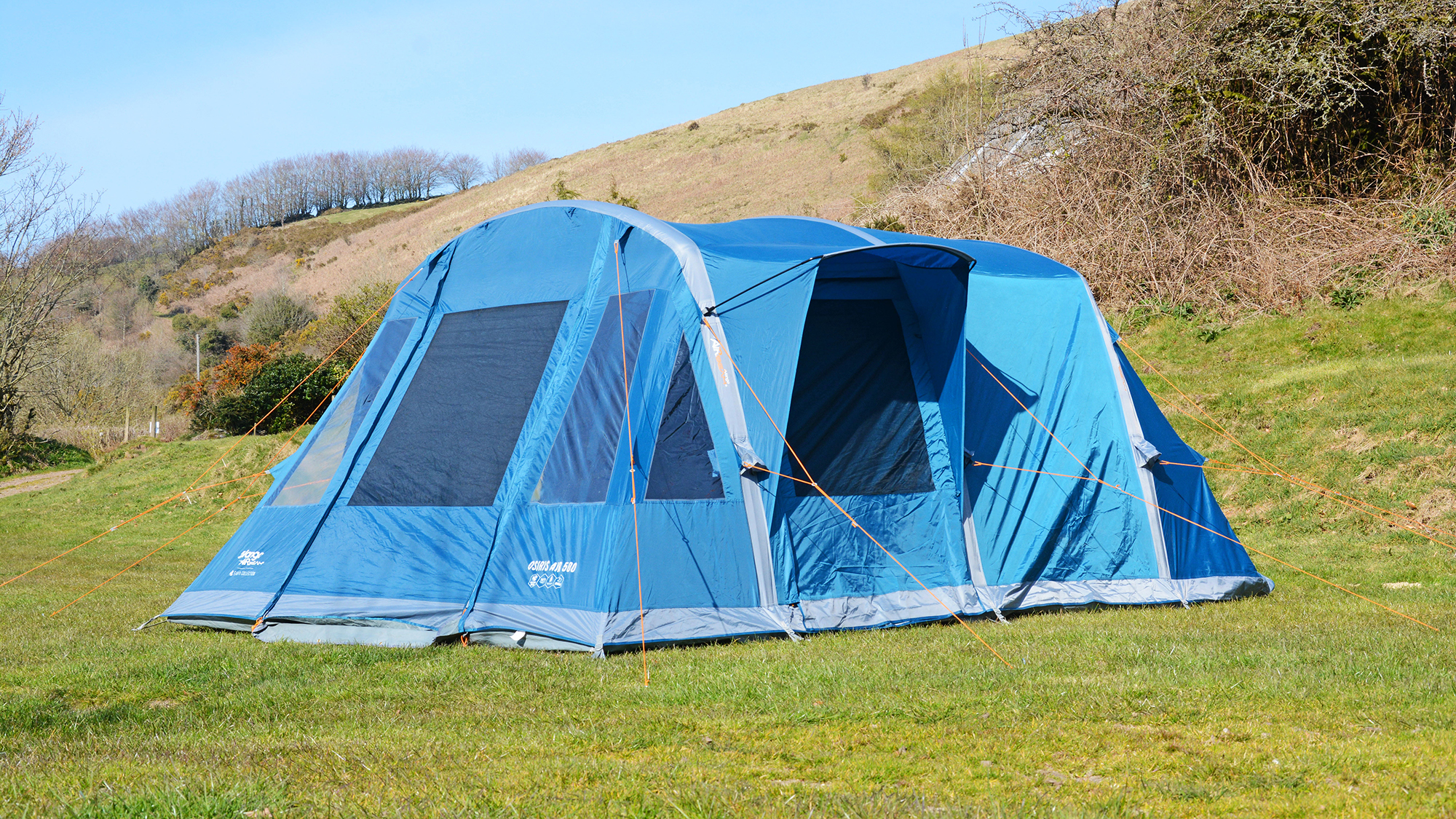
1. Vango Osiris Air 500
Our expert review:
Specifications
Reasons to buy
Reasons to avoid
The new Osiris 500 is an air tent from the Vango’s pioneering Earth Collection – a range of tents, sleeping bags and outdoor chairs all made from Sentinel Eco Fabric, a material that’s entirely comprised of recycled single-use plastic waste. Each and every Osiris tent accounts for 158 plastic bottles.
But even putting aside its excellent eco credentials, the Osiris 500 is a superb camping tent. Instead of poles, the structure is erected with airbeams – thick, robust tubes that you inflate with the use of a pump (included) – which means one person can pitch the whole tent in a matter of minutes.
Tension bands provide security and confidence when the weather gets wild, and it has been extensively tested in adverse conditions. It’s spacious, without being ridiculously massive (some large tents are so palatial they don’t fit on campsites, and never feel warm because they’re too cavernous, but the Osiris is just right).
With one main communal area and two bedrooms (which can be converted to one big bedroom), it comfortably sleeps five people. The sleeping quarters are fitted with nightfall drapes, so you don’t have to wake with the dawn, and the ceilings are high enough in this villa-style tent for adults to stand upright throughout.
It has ample storage, with pockets aplenty and hanging capacity for lanterns and lofts, and there’s lots of ventilation and light, with ‘Diamond Clear’ windows and mesh doors. There’s even a bay window, something we think all the best camping tents should now have!
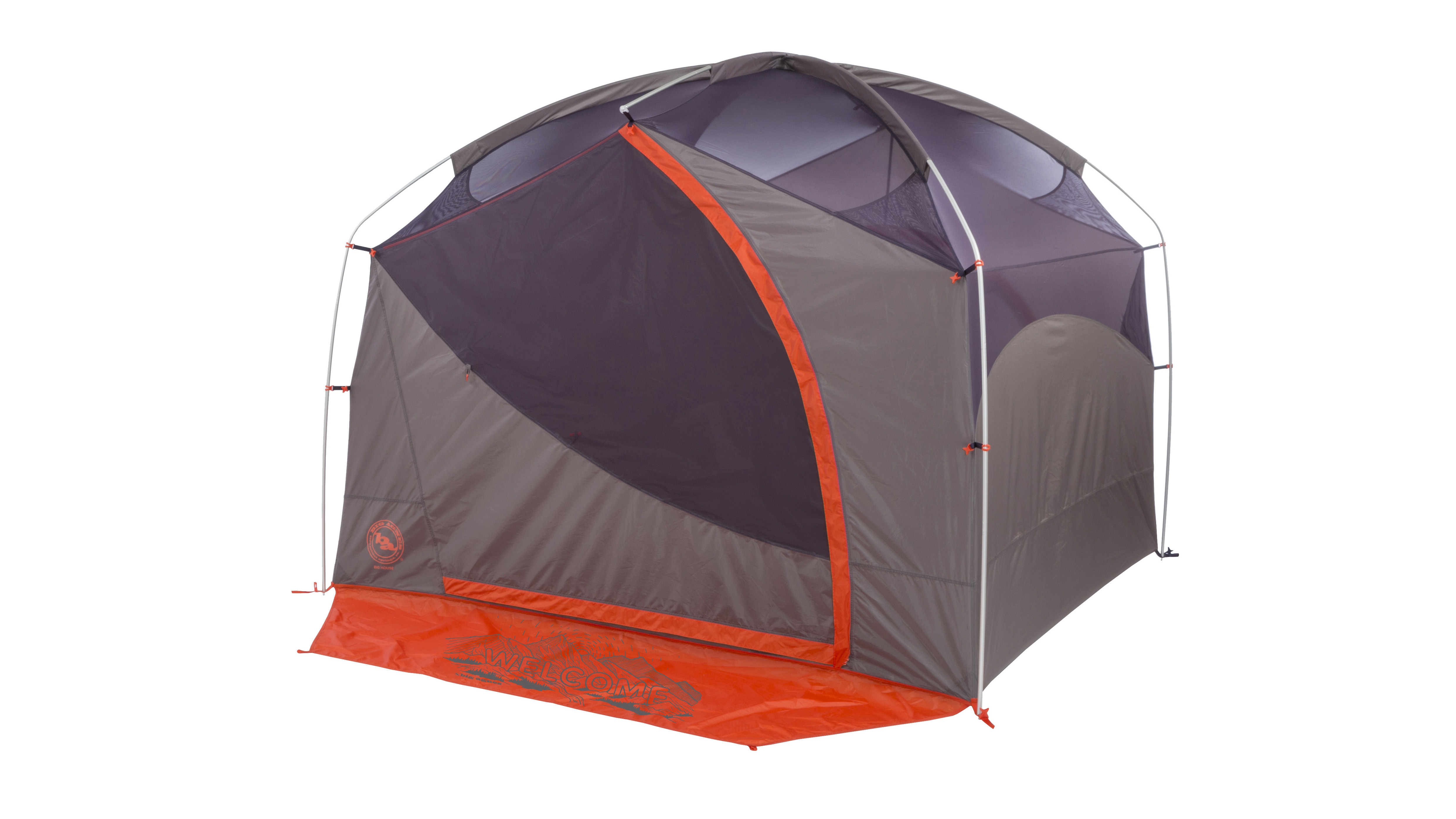
2. Big Agnes Big House 4 Deluxe
Our expert review:
Specifications
Reasons to buy
Reasons to avoid
A weekend in the woods with family and friends is a far better experience if you are warm, dry and comfortable. By delivering those features, this excellent four-person camping tent quickly becomes a family friendly basecamp. Living space includes a stand-up-tall interior and plenty of room for four people. It’s one main compartment, but don’t worry about misplacing your gear: there is a very useful collection of 12 storage compartments, including mesh pockets, removable corner bins and media pockets, plus interior loops for hanging lanterns, headlamps or damp clothes.
In terms of set-up, this is one of the best camping tents out there. Large tents can be complicated to erect, but that’s not a concern with this shelter; color-coded webbing and buckles removes any set-up stress. Pre-cut guylines and tensioners that are already attached to the rainfly help fine-tune the tent in windy or rainy conditions.
The oversized pole configuration serves as an awning for the substantial vestibule. It’s large enough to accommodate a camp chair so you can watch the sunset protected from the weather, but it is sold separately ($130), along with the footprint ($50). Two large doors are designed to match conditions. For hot nights, large mesh sections improve ventilation. When Mother Nature changes her mood, zip up panels keep the interior warm and dry.
Tents for backpacking
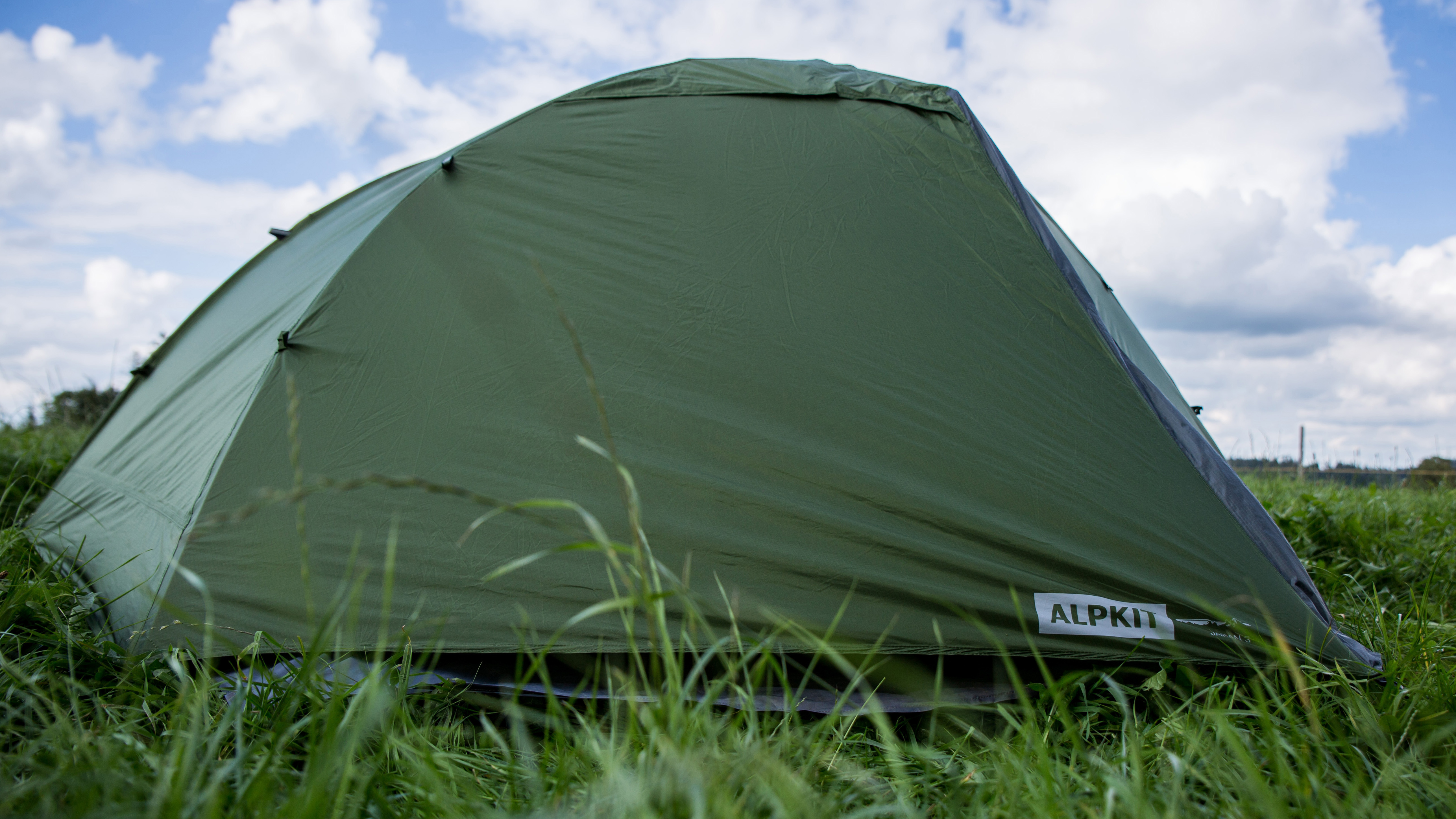
Specifications
Reasons to buy
Reasons to avoid
Combining the functionality of twin porches, semi-geodesic geometry and a strong wind-resistant design, the Alpkit Jaran 3 tent is an ever-popular choice for hikers who want a backpacking tent to take into the mountains and beyond. The horizontal supporting crossbar might prove a bit fiddly to begin with, but after slotting all the poles together it’s a no-nonsense design. Black clips enable you to hang the liner before easily clipping the outer, ensuring easy assembly when you need it. A great, spacious tent that sleeps two (in luxury) or three people, the Jaran has ample ventilation slots and mesh panels to keep the bugs out. This ensures makes it an ideal three-season tent, which will keep you warm, dry and largely bug-free for the majority of the year.
The thicker flysheet provides durability, whilst the bathtub style groundsheet gives some protection from the ground, although a footprint (sold separately) is recommended in damp, boggy mountainous ground.
It also offers lots of liveable functionality, due to twin porches that ensure the living space within the tent is readily available, with ample room for storing kit either side of sleeping spaces. This makes the Jaran 3 easy to share with a companion or two, or ideal for small families (parents and child), with room for sleeping kit inside and bigger bags protected from the elements out in the porch.
Read our full Alpkit Jaran 3 ultralight backpacking tent review
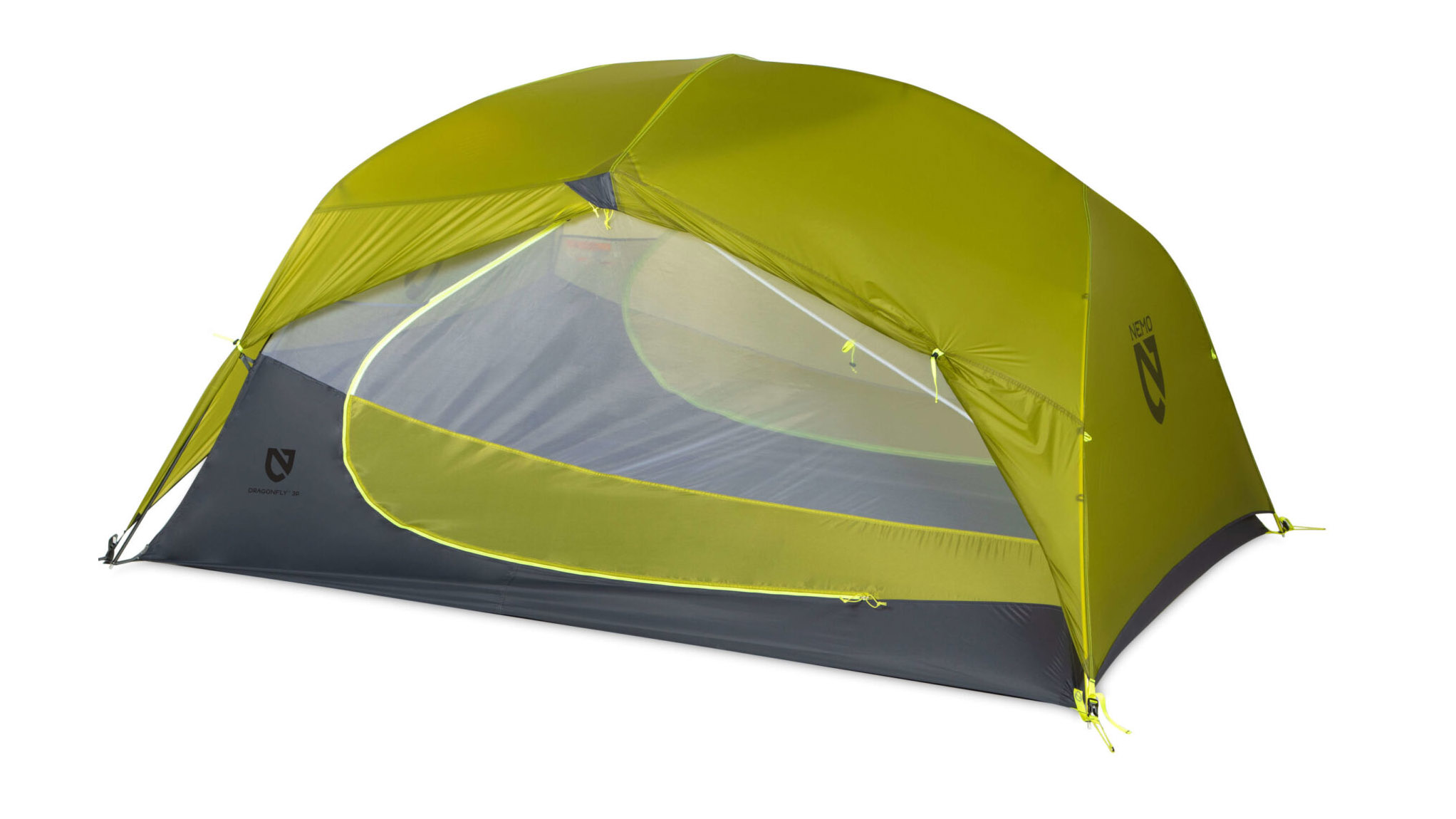
4. Nemo Dragonfly
Specifications
Reasons to buy
Reasons to avoid
An unusual beast, the Dragonfly is a camping tent big enough to accommodate more than two adults but is light enough to take backpacking. Split the pegs, poles and fabric up between three people’s packs, and you have one of the best tents for its size for taking on the trail – also good for small families who want to backpack. After using such a tent a few times, the measure of success comes in two criteria: ease set-up and comfortable liveability. The Dragonfly earns high marks for both. Color-coded poles and webbing, plus pre-bent DAC Featherlight poles combine to create a hub system that can quickly to assembled to create a spacious, high-volume, freestanding living space.
This model can accommodate two people with loads of space, or three if you don’t mind getting cosy. (There are one-person and two-person versions of the Dragonfly available too.) Occupants can crawl in (or escape for a midnight ablution) via one of the two large doors. The vestibules can be rolled back to increase visibility and ventilation. Small details enhance the liveability measurably, and make this one of the best camping tents for longer excursions. White mesh on the side panels adds privacy, while black mesh on the Dragonfly’s ceiling permits long after-dark star gazing. Gear storage pockets keep small and expensive electronics safe and near-at-hand. Specialized light diffusing fabric ceiling panels soften harsh hard headlamp beams.
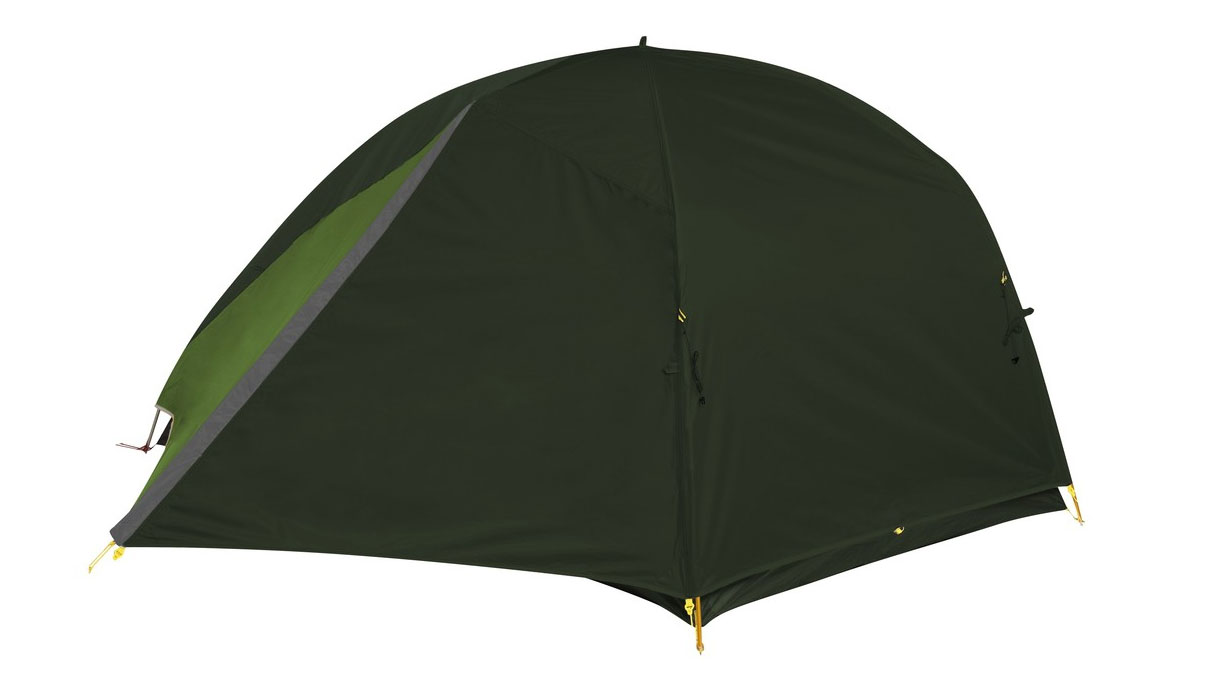
5. Sierra Designs Meteor 3000 2P
Our expert review:
Specifications
Reasons to buy
Reasons to avoid
A newcomer among the best camping tents, this superb model is based on US brand Sierra Designs’ bestselling Meteor series but tweaks the build to make it better suited for wetter climates. As such it features enhanced waterproofing, in an earthy green colourway that makes it far more practical for stealthy wild camps.
The fly provides good coverage and there is added wind protection too, thanks to an inner tent that features more fabric and less mesh. Sierra has retained the same lightweight, double-door, twin porch design that has made the Meteor such a popular backpacking tent. It offers decent living space, two roomy porches and plenty of headroom, with practical features like two-way door zips for additional ventilation. Pre-bent DAC poles create a vertical front wall while an extra ridge pole creates near vertical side-walls.
The flysheet can also be rolled back for added ventilation or a spot of stargazing on warmer nights. It does need to be pitched inner-first, which is a minor inconvenience if you’re setting up camp in the rain. This is one of the best 2-person tents around for backpackers and wild campers, as well as a choice that gives you excellent value for money.
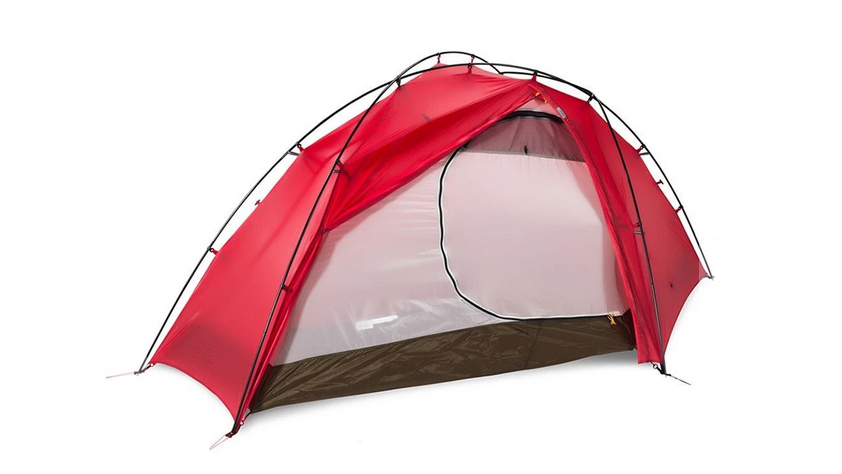
6. Big Sky Chinook 1Plus
Our expert review:
Specifications
Reasons to buy
Reasons to avoid
The dome-shaped Big Sky Chinook is a hardy four-season shelter, able to withstand properly foul stormy conditions. When operated as a single-unit (fly-clipped-to-tent), it’s great for setting up and packing down in bad weather. It’s also fairly roomy for a one-person tent – and able to accommodate two at a stretch.
Here’s the catch for those benefits, however: it’s also the up double the weight of other one-person tents on test. But room, warmth and staying dry may be worth paying the price of heft, especially if you can split the carrying weight between two. The strength ratio comes from a sturdy three-pole design which can actually be downscaled to a two-pole set up if you want to find weight savings as solo traveller, but that also drops you into three-season territory.
In three-pole mode, the fly is drum-tight when set up, which is great for shedding snow and repelling water, but harder in set-up mode due to how taught it is. A double-wall construction with two top vents does the job of preventing interior condensation while still holding on to body heat warmth in cold conditions.
The steep wall design sheds snow well, so it’s one of the best camping tents fo rwinter, and there are many tabs sewn into seams for additional guys. The pole clip design offers super-fast and easy setup and take-down and the interior buckling to the outer shell for one piece setup/take down ensures good for speed in foul weather.
The interior is large, with a high ceiling and decent doors on each side that allow easy entry and exit for either one or two people (no need to climb over each other). The durable 30D nylon silicone/PU-coated and seam taped fabric floor keeps the footprint dry and 1500mm rated fly sheet keeps things super dry.
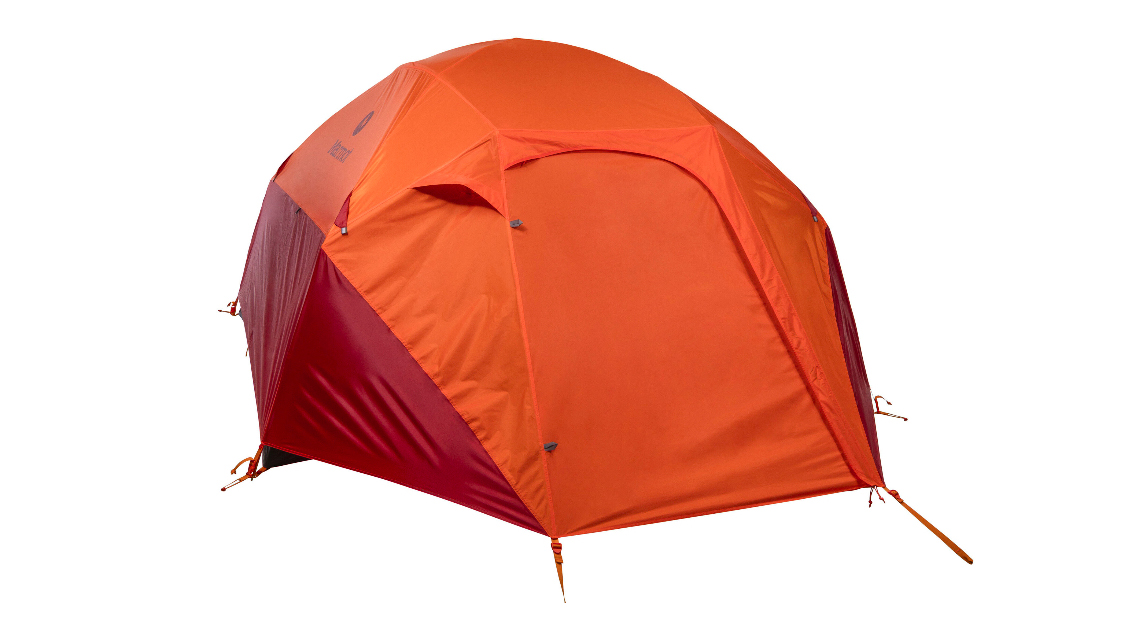
7. Marmot Limelight 4
Our expert review:
Specifications
Reasons to buy
Reasons to avoid
Small details matter. Often overlooked by first time tent buyers, details like color-coded easy pitch clips and poles, a waterproof seam, taped full-coverage rainfly, and durable fabrics make the Limelight 4 a very comfortable four-person tent.
Set-up is fast and stress free. Reflective points shine under headlamps and help avoid campers tripping over guidelines after dark. A large D-shaped door makes entry easy. The top half of the Limelight uses mesh to improve ventilation, save weight and lets campers stargaze late at night.
On the other hand, the mesh doesn’t provide much privacy. The rainfly provides solid weather protection but in place, ventilation suffers a bit. The spacious floor plan fits four and two vestibules add more storage space. Marmot offers a nice unique touch with a doormat to clean boots and keep twigs, grass and leaves outside of the tent.
A fine choice for car camping families, it’s also light enough to take backpacking if you split the load. The Limelight is constructed with a excellent attention to detail, durable materials and plenty of features to improve liveability. This tent is backed by Marmot’s lifetime warranty.
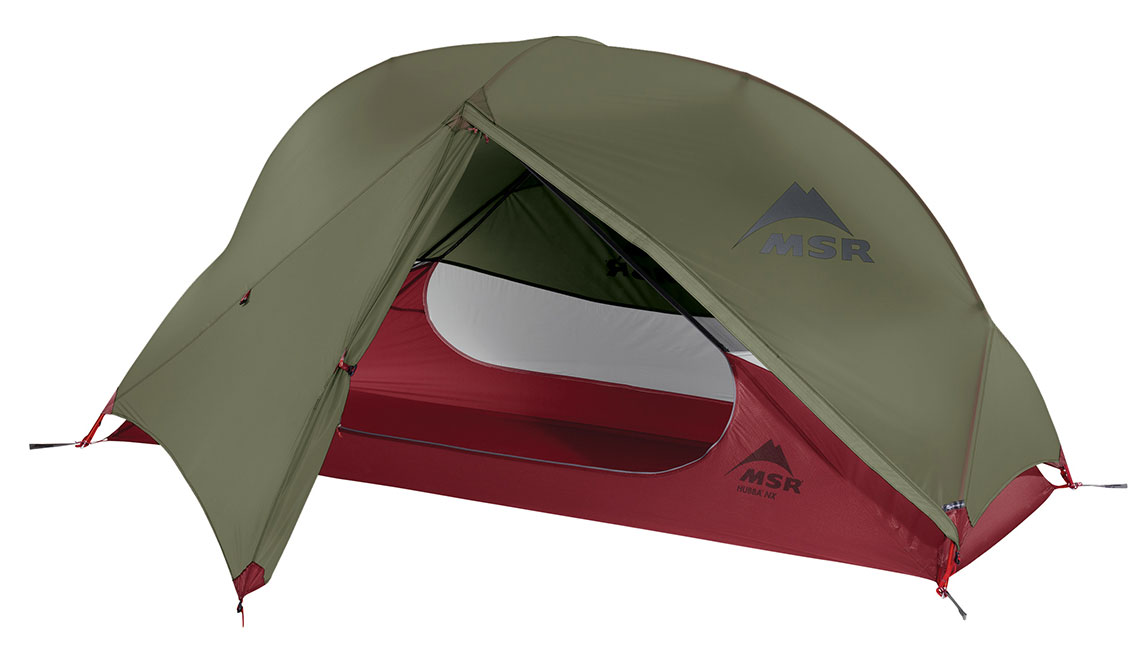
8. MSR Hubba NX Solo
Our expert review:
Specifications
Reasons to buy
Reasons to avoid
The Hubba NX Solo is MSR’s best-selling freestanding solo tent – and there’s a very good reason for that. This tent is an excellent all rounder, balancing lightweight credentials with durability and practicality. Its minimum weight is just over a kilogram, but there is a ‘Fast and Light’ option at 0.7kg. It's simply one of the best tents out there.
This camping tent is easy to set up, with colour coded poles and clips, and comes with a stuff sack with compression straps. The rain fly has kickstand vents to allow you to adjust ventilation depending on conditions. You can also roll up the vestibule rainfly for better air flow on hot nights, or just to lay back and enjoy the night sky – maybe at one of the best sites in the US for stargazing.
Pop-up camping tents
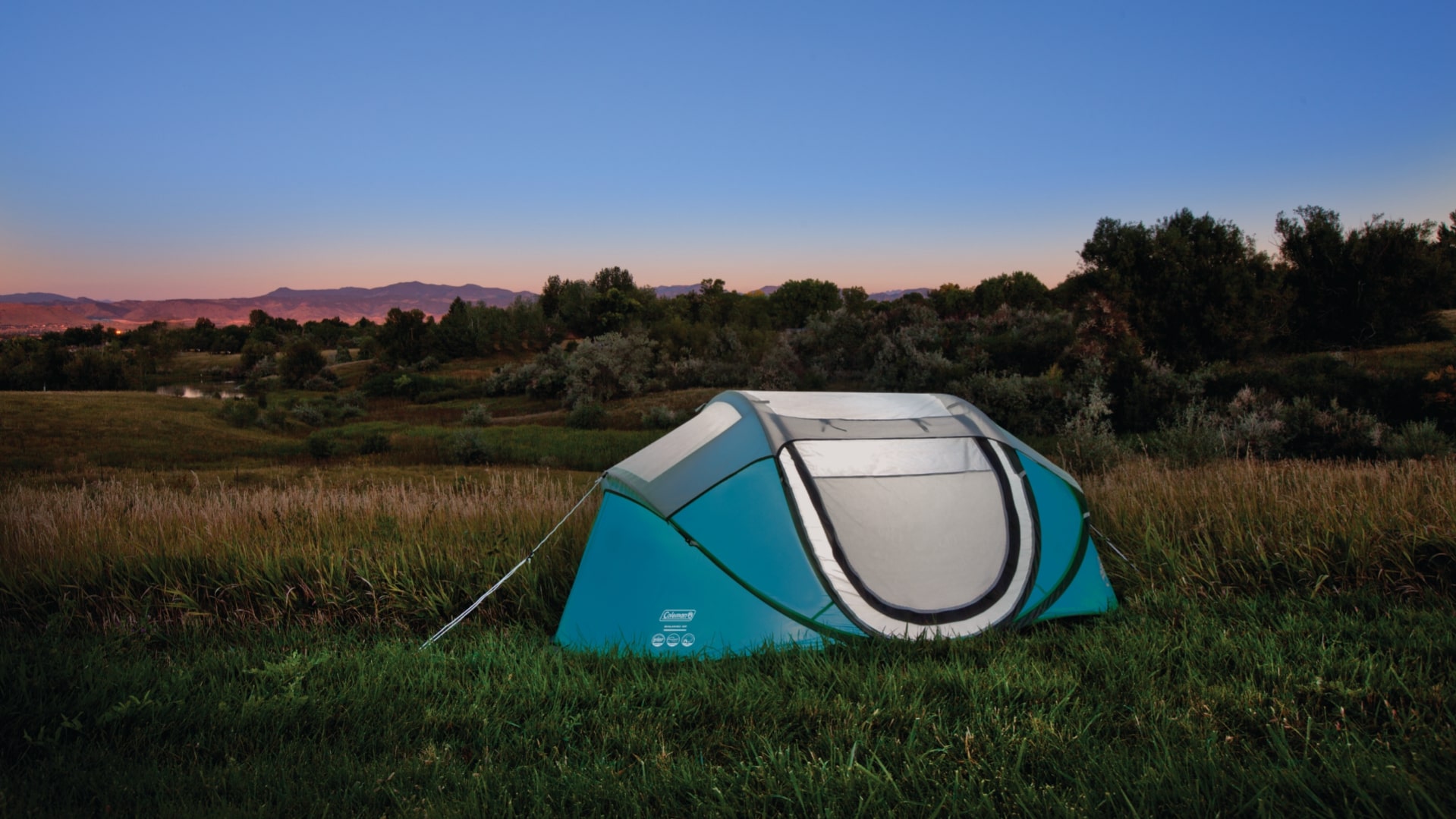
Specifications
Reasons to buy
Reasons to avoid
Coleman’s popular Galiano tent is available as both a 2-person and a 4-person tent, and we’d recommend both as not just two of the best pop-up tents, but two of the best tents on the market full stop. This is especially true if you just want a simple tent without bells and whistles. Like most pop-ups on our list, they erect as soon as they’re freed from their circular bag, you just need to peg in the reflective guy lines.
Inside, a thick nylon groundsheet keeps you dry and wide vents in the roof help with airflow. Taped seams and a flysheet waterproofed to 2,000mm offer enough protection from the kind of weather you can expect from a British summer, although this is a single skin design, so won’t be tough enough for other seasons, and there are only two guy ropes, which isn’t enough to fight off strong winds. In terms of size, we’d recommend the two-person camping tent for one or two people, and the four-person model for three adults or a family with two smaller children.
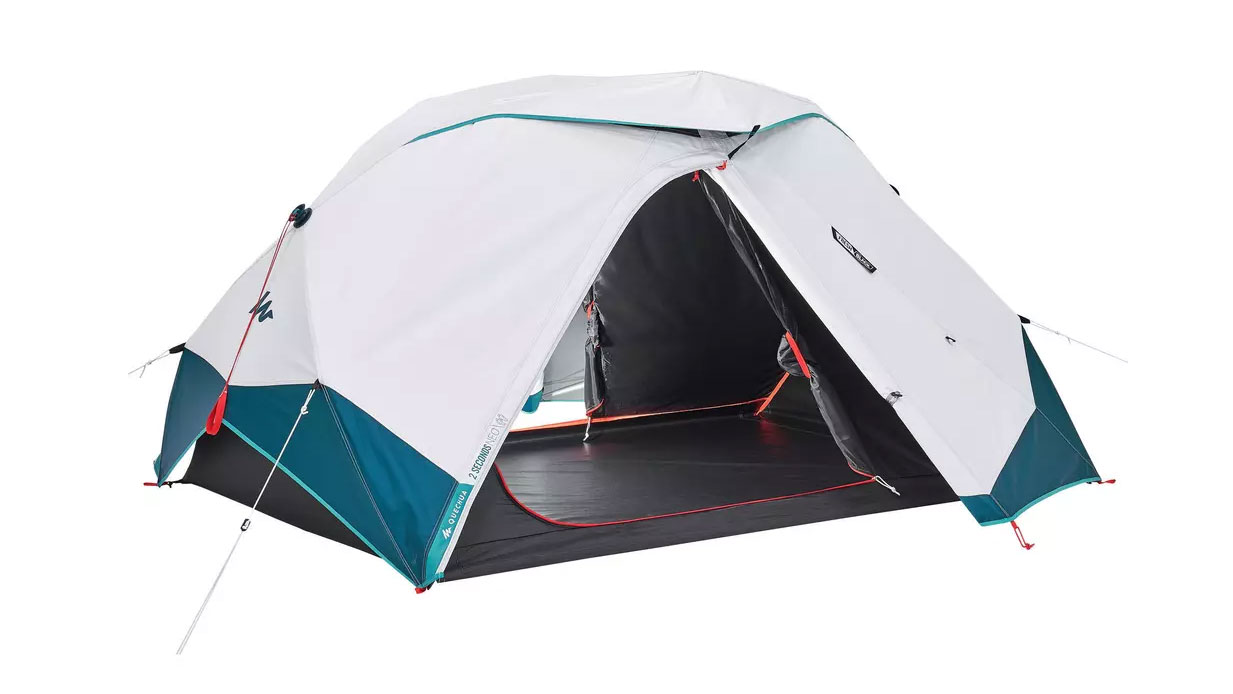
10. Decathlon 2 Seconds Easy Freshblack
Our expert review:
Specifications
Reasons to buy
Reasons to avoid
Despite having tested it out on weekends in the wilderness, we still don’t really understand how this clever camping tent erects – it’s a bit of a magic trick. Tip the 2 Seconds Easy Freshblack (it has a bit of a mouthful of a name) out of its bag, pull two cords tight and it springs into shape, then you just peg it down and you’re ready to camp. Boom. To dismantle, you click a release button and then gather the tent into its bag, which is also the work of minutes. With such little fuss, it's one of the best tents of its kind.
Inside, there’s a bedroom suitable for two, plus backpacks, and lined with effective blackout material, as well as handy pockets and a lantern hook. Although this tent can’t really be classed as lightweight, it’s still just about small and portable enough to be useable for wild camping and backpacking at a pinch, as it folds down into a compact rectangle rather than a bulkier circle, and fits in a backpack. Otherwise, it’s brilliant for festivals and carefree camping weekends through summer and a few months either side.
Best tarp tent
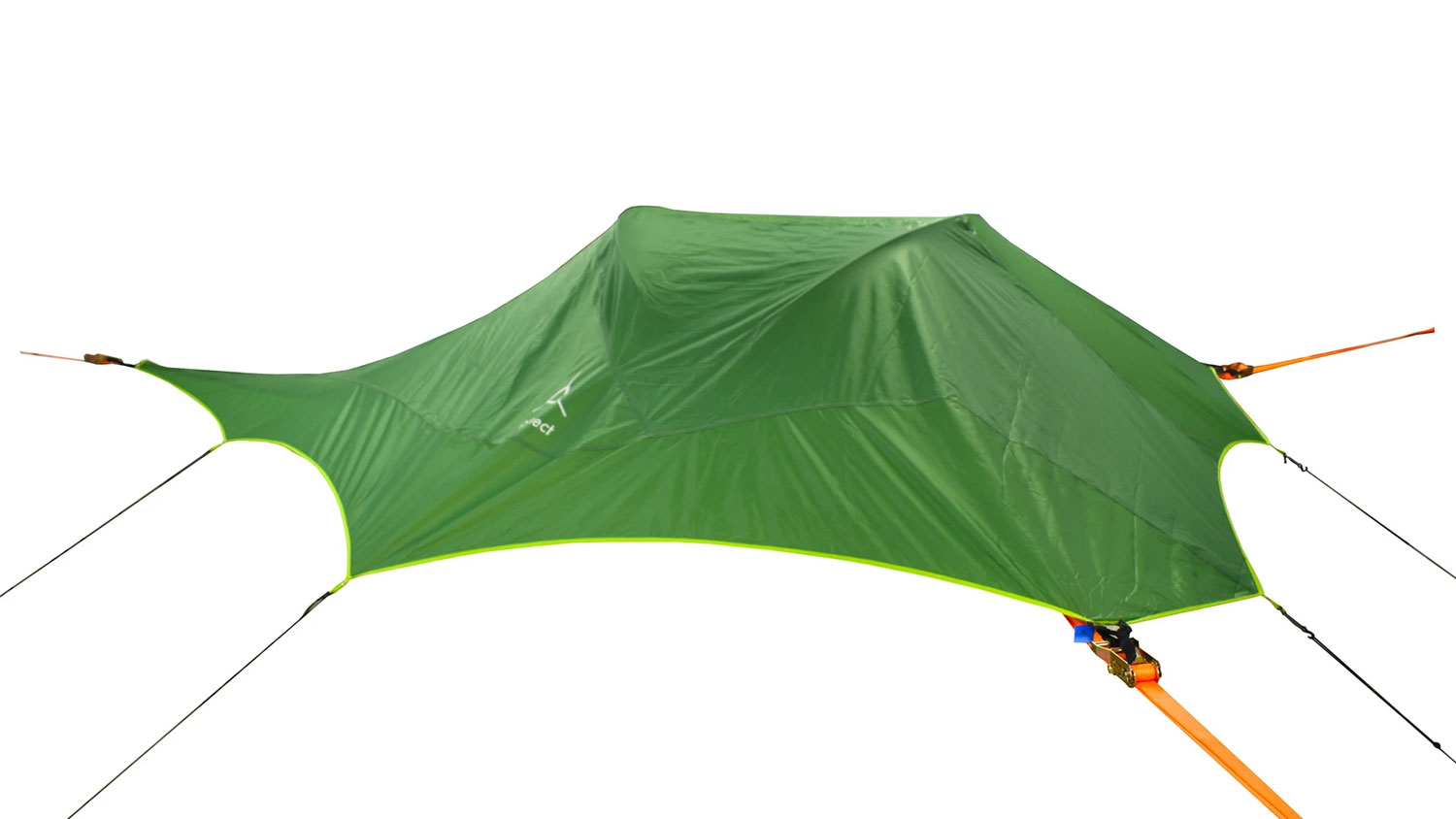
11. Tentsile Connect
Our expert review:
Specifications
Reasons to buy
Reasons to avoid
Tentsile’s innovative and striking tree-tent designs, loftily suspended among the trees, serve up a fun and unique way to spend a night in the great outdoors that makes for undeniably Instagram-worthy pictures. If you love sleeping in forests and woodland, this is a great option that combines the best bits of hammock camping with all the benefits of a tent.
The tree tent utilises a sturdy three-point anchor system, delivering a taut and tensioned platform with minimal sag, (unlike a hammock). The surface has enough flex to ensure it is very comfortable, making it more practical than pitching a tent on the ground, and it has a full mesh inner with two zipped side doors and plenty of internal space, incorporating numerous storage pockets. The fly extends outwards from the tent, providing ample protection even in poor weather and creating a large, dry area underneath the tent to store gear or seek shelter.
Inside, two alloy crossing poles form a 4m by 2.5m triangular sleeping area, with 1m of head height at the highest point. A reinforced central webbing strap down the middle of the tent floor effectively creates separate sleeping bays for each person, ensuring you don’t end up squashed together in the middle of the tent. For an optimum setup, you need to find a fairly widely-spaced trio of trees in a triangular configuration.
You need to try and make sure your anchor points are all placed at the same height, and we found anywhere in the range of about 3-4ft off the ground was ideal. Being higher up looks cooler but makes it tricky to climb in and out – unless, of course, you also own Tentsile’s nifty webbing ladder.
| Tent | Price | Weight | Style | Best use |
| Vango Osiris Air 500 | £550 (UK) | 15.3kg / 33lb 11.7oz | 5-person family tent | 3 season use: car camping |
| Big Agnes Big House 4 Deluxe | $400 (US) / £295 (UK) | 5.84kg / 12lb 14oz | 4-person tall camping tent | 3 season use: car camping, festivals |
| Alpkit Jaran 3 Ultralight backpacking Tent | $369.99 (US) £279.99 (UK) €329.99 (EU) | 2.4kg / 83.24oz | 3-person backpacking tent | 3 season hiking, backpacking, general camping |
| Nemo Dragonfly | $500 (US) / €460 (EU) | 1.77kg / 3 lb 15oz | 3-person backpacking tent | 3 season use: backpacking, thru-hiking, car camping |
| Sierra Designs Meteor 3000 2P | $250 (US) / £250 (UK) | 2.04 kg / 4lb 8oz | 2-person backpacking tent | 3 season use: backpacking, thru hiking |
| Big Sky Chinook 1Plus | $400 (US) / £400 (UK) | 1.6kg / 3lb 8.4oz | 1-person winter backpacking tent | 4 season use: backpacking, thru hiking, winter camping |
| Marmot Limelight 4 | $380 (US) / £370 (UK) | 3.85kg / 8lbs 8 oz | 4-person backpacking tent | 3 season use: backpacking, car camping |
| MSR Hubba NX Solo | $380 (US) / £385 (UK) | 1.29kg / 2lb 13.5oz | 1-person backpacking tent | 3 season use: backpacking, thru hiking |
| Coleman Galiano | 2-person: £70 (UK), 4-person £90 (UK) | 2.5kg / 5lb 8.2oz (2-person) or 3.3kg / 7lb 4.4oz (4-person) | 2 or 4-person pop up tent | 3 season use: car camping, festivals |
| Decathlon 2 Seconds Easy Freshblack | $199 (US) / £100 (UK) | 4.9 kg / 11 lbs | 2-person pop up tent | 3 season use: car camping, festivals |
| Tensile Connect | £399 (UK) | 9.5 kg / 20.9 lbs | 2-person tree tent | 3 season use: forest and woodland wildcamps |
How we test camping tents
At Advnture we endeavor to test every product we feature extensively in the field. That means one of our team of reviewers and writers – all experienced outdoor specialists active across the US, UK, Europe and Australasia – taking it out into the terrain and climatic conditions that it’s designed for. If, for any reason, this isn’t possible, we’ll say so in our buying guides and reviews.
Our reviewers test camping tents overnight in outdoor conditions, temperatures and terrain appropriate to the rating assigned to the product by the manufacturers/ brand. Specific features (weight, zip quality, headroom, ventilation, vestibules, awnings, ease of assembly/packing and so on) are tested against claims made by the brand.
Choosing the best camping tent for you
Almost every individual, couple, family or group has a slightly different set of requirements or preferences when it comes to selecting the best camping tent for their needs. When you're considering a tent, it all boils down where you want to camp, who with, and what time of year you’re planning to head out and pitch up.
There's a size of every occasion, with tents generally categorised into one-person tents, two-person tents, four-person tents and family tents. Obviously, the larger the model, the heavier it tends to be, which isn't a problem if you're off car camping with kids. If you're camping with teenagers, a large model with separate vestibules gives everyone a bit of privacy. Unfortunately for those who have to put up with snoring camp mates, no one has yet designed a noise-cancelling tent.
If you're off on a wild camping adventure, lighter tents are the order of the day - just make sure you know how to stay warm in a tent if temps are low. However, if you're thru-hiking in the hills and mountains, you'll also need a tent that can repel the worst of the elements.
So, before you start planning your camping trips and before investing in a shelter, consider the following factors.
Performance
You can trust Advnture
The primary function of any tent is to keep you protected from the elements – mainly wind and rain, but sometimes snow too. On the best tents, the flysheet and groundsheet fabric will have a quoted Hydrostatic Head (HH) weighting in terms of thousands of mm – e.g. 3,000mm – which reflects how much pressure the fabric can withstand before it lets water in. So, a flysheet with a HH of 3,000mm could have a solid column of water 3 metres tall bearing down on it before it fails.
Groundsheets should be even more robust, but the thicker the material, obviously the heavier the tent will be. Also, HH isn’t everything – a good tent will also need decent stitching, well-sealed seams and quality zips. Ventilation is another important factor – a tent may be fully waterproof, but without adequate moisture management you’ll still get wet from condensation build-up.
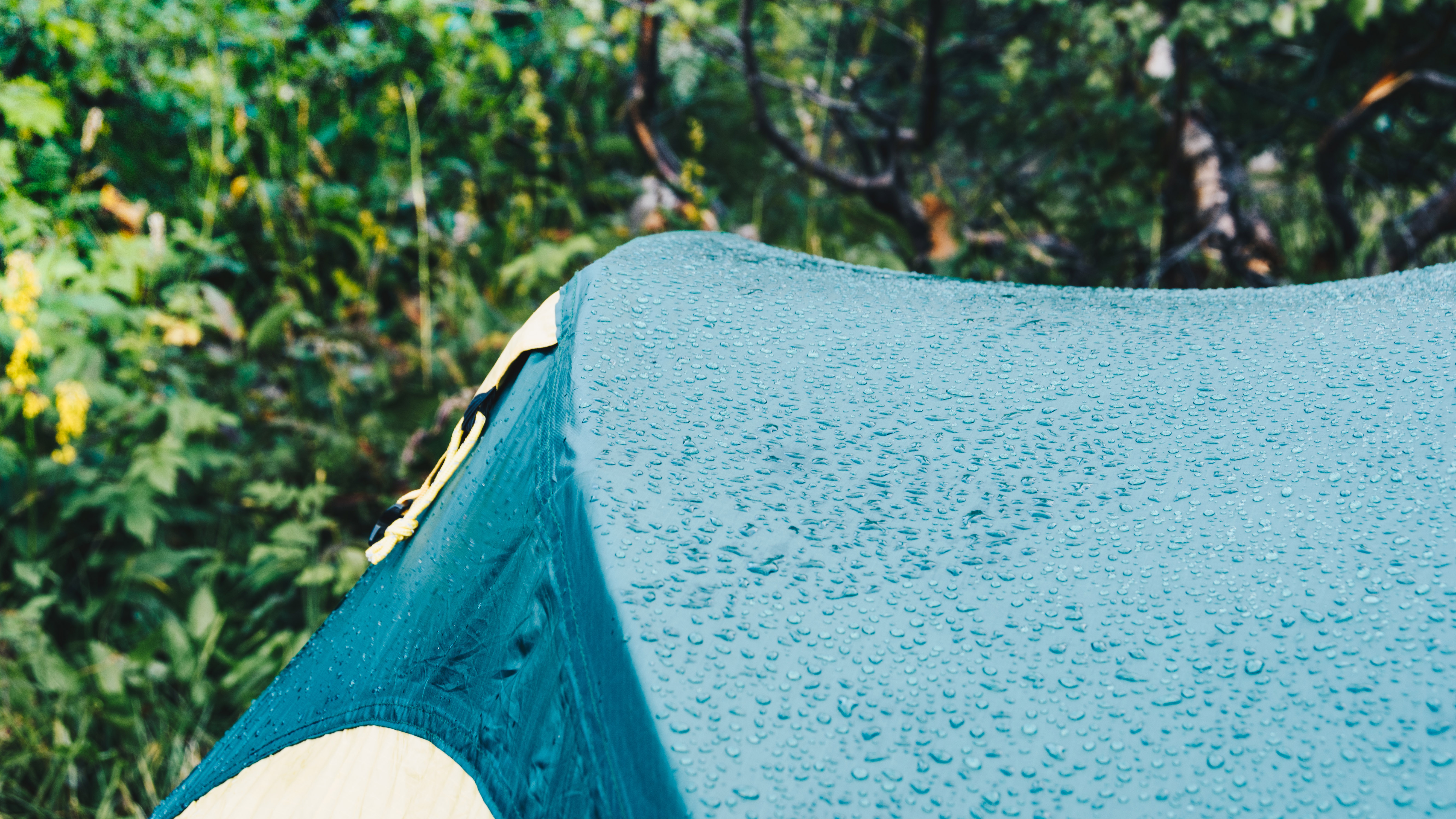
Design and construction
There are many different types of tent design: ridge tents, dome tents, tunnel tents, geodesic tents, semi-geodesic tents, tipi tents, pop-up tents and even inflatable tents. Which one is the best tent design for you will depend on the size of your group and the type of use you’re putting the tent to.
Most tents have a double-skin design, meaning they are comprised of a fabric-and-mesh inner structure (your abode) with a waterproof flysheet over the top. Which ever design you choose, check out the features on the inside as well, because they’ll make a difference to comfort levels. Many inner tents have useful pockets for storing small items, such as headlamps, flashlights, insect repellent and other camping tech items (see our guide to the best headlamps for some good options), or for stashing away tent doors, as well as overhead hanging tabs or hooks for a tent lantern or gear loft.
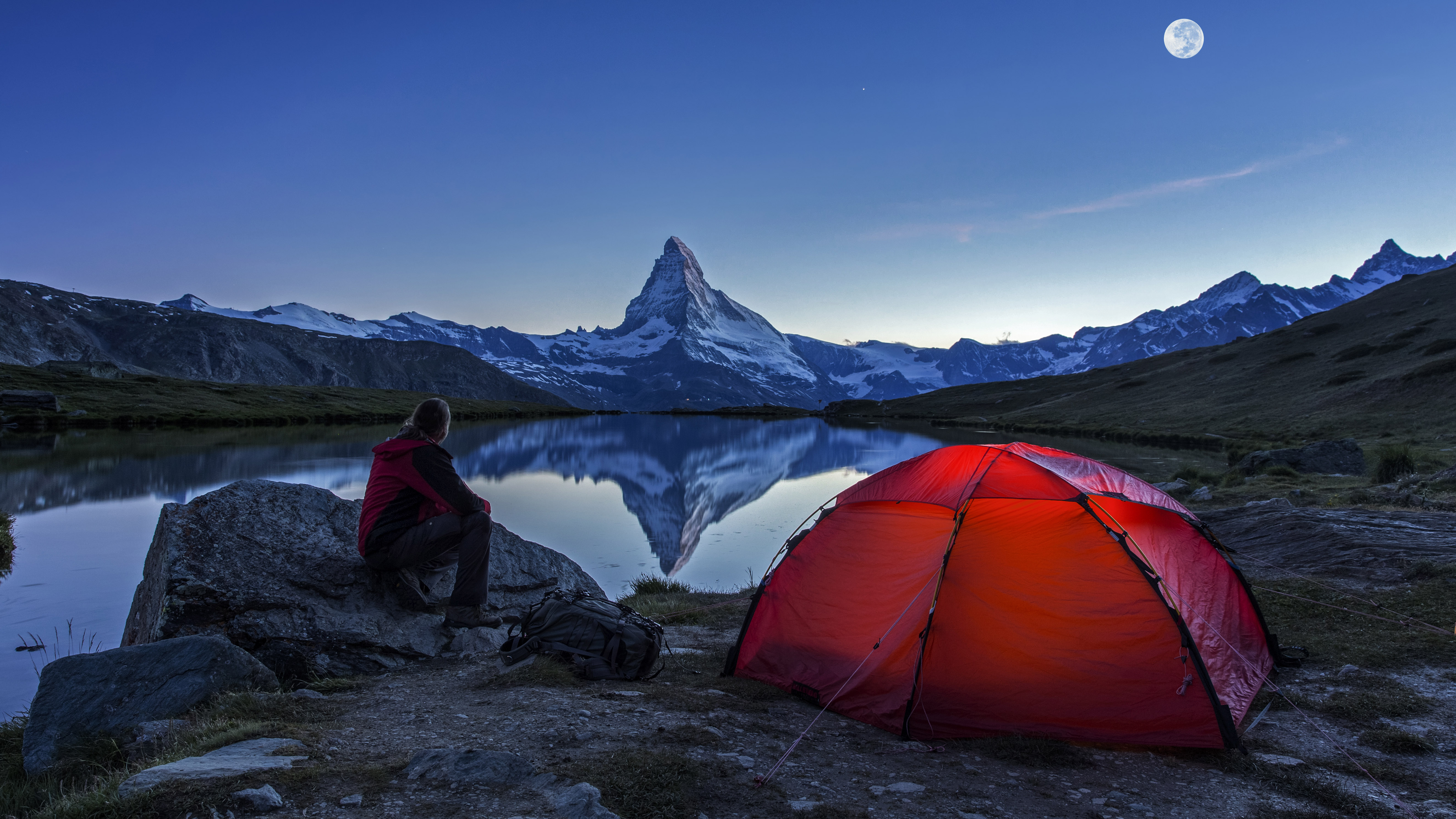
Space
The best camping tents are designed with spaciousness in mind, though you'll stilll need to consider the total floor space of the inner, to ensure you’ll have enough room for the number of people you intend sharing the shelter with. Make sure it is long enough for you all to stretch out and wide enough to accommodate your sleeping pads. If you’ll also have a lot of camping or backpacking gear, think about whether the tent offers enough space to store it, either inside the inner tent with you, or in the porch or vestibule(s).
Also look at the headroom – ideally, you want to be able to at least sit up inside the tent. Depending on the tent’s design, the ceiling may taper towards the foot end, so you may not be able to sit up throughout its length. In family tents, grumpiness will be avoided if the tallest member of the clan can stand upright without pushing the inner against the fly and producing drips.
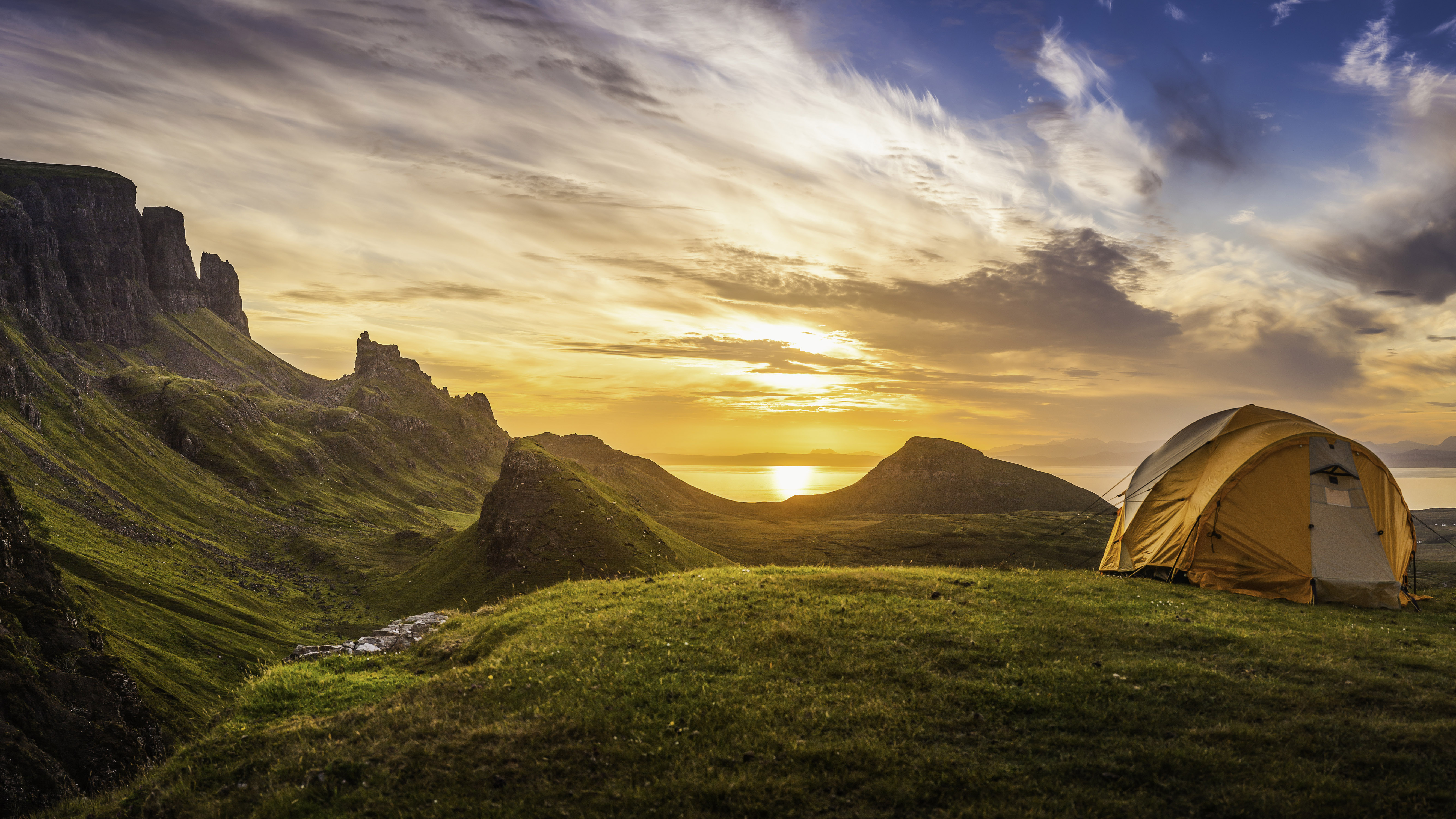
Vestibules
The best camping tent options will usually have at least a small space outside the inner tent that is still protected by the flysheet, usually located at the entrance(s) of the tent. This is called a porch or vestibule. It’s a great place to store wet kit and muddy boots, and can also act as a sheltered space to cook on a camping or backpacking stove in poor weather. With backpacking tents, make sure that the porch is big enough to accommodate your gear – otherwise you might be forced to keep your pack outside your tent, which is bad news.
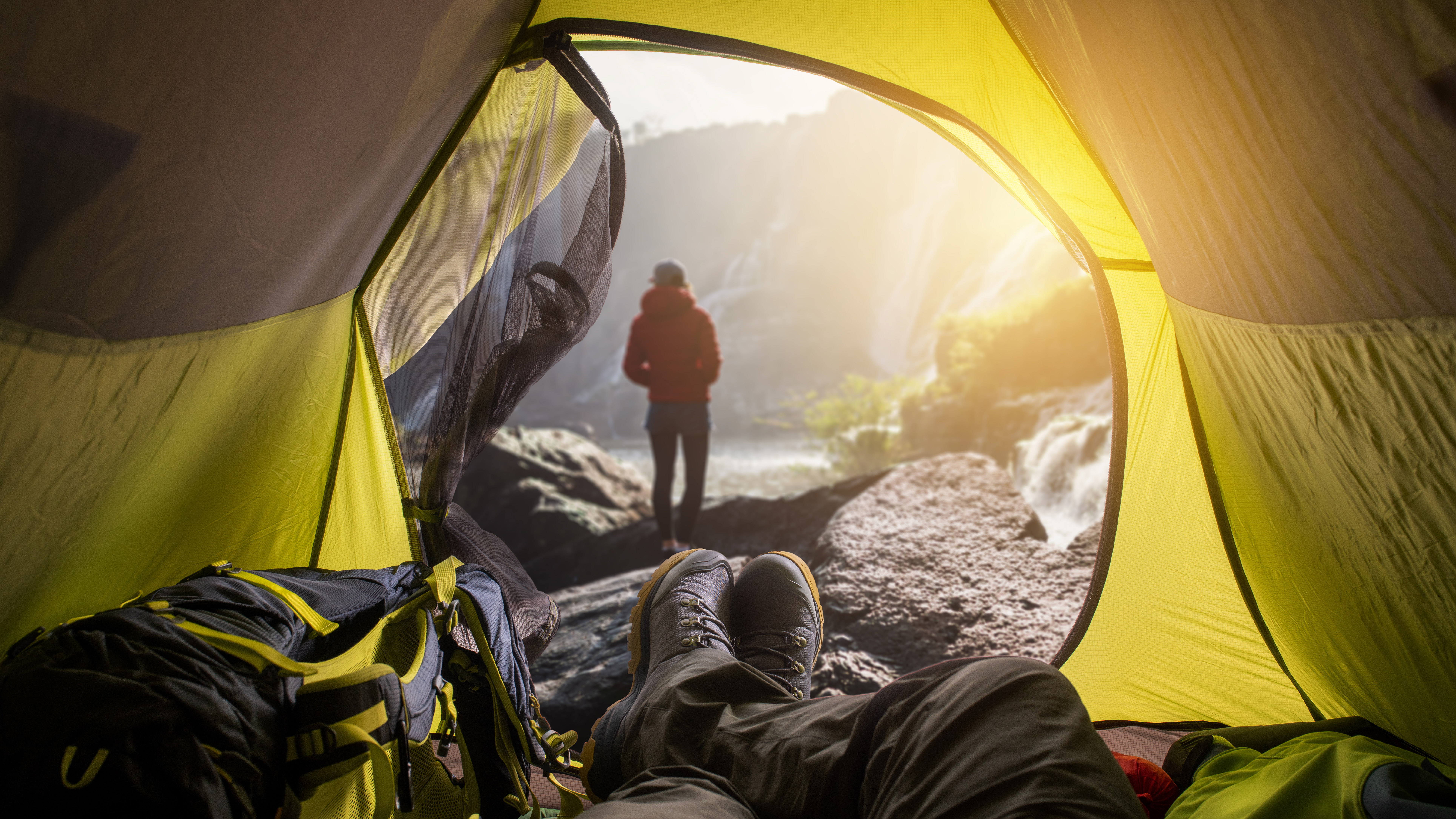
Pitching
Knowing how to pitch a tent and where – or where not to camp – is crucial if you are going to enjoy your camping experience. Tents pitch in one of three ways: inner first, outer first or all-in-one. With an inner-first design, the poles usually attach to the inner tent with clips and the flysheet is then thrown over the top. This is a simple and stable system that makes it easy to tweak and adjust fly sheet tension if necessary. With an outer-first design, the poles are usually threaded through sleeves in the flysheet, or sometimes the fly is clipped to a skeletal pole structure. The inner then attaches to the inside of the flysheet. This system is ideal if pitching in the rain, as the inner can more easily be kept dry.
With an all-in-one system, the fly and inner are pre-attached to each other, and poles are then threaded through sleeves or clipped to the whole tent. This offers quick and easy setup, but sometimes makes it harder to fine-tune tent tension. Air tents are obviously different, using inflatable tubes instead of poles, and are generally easy to set up.
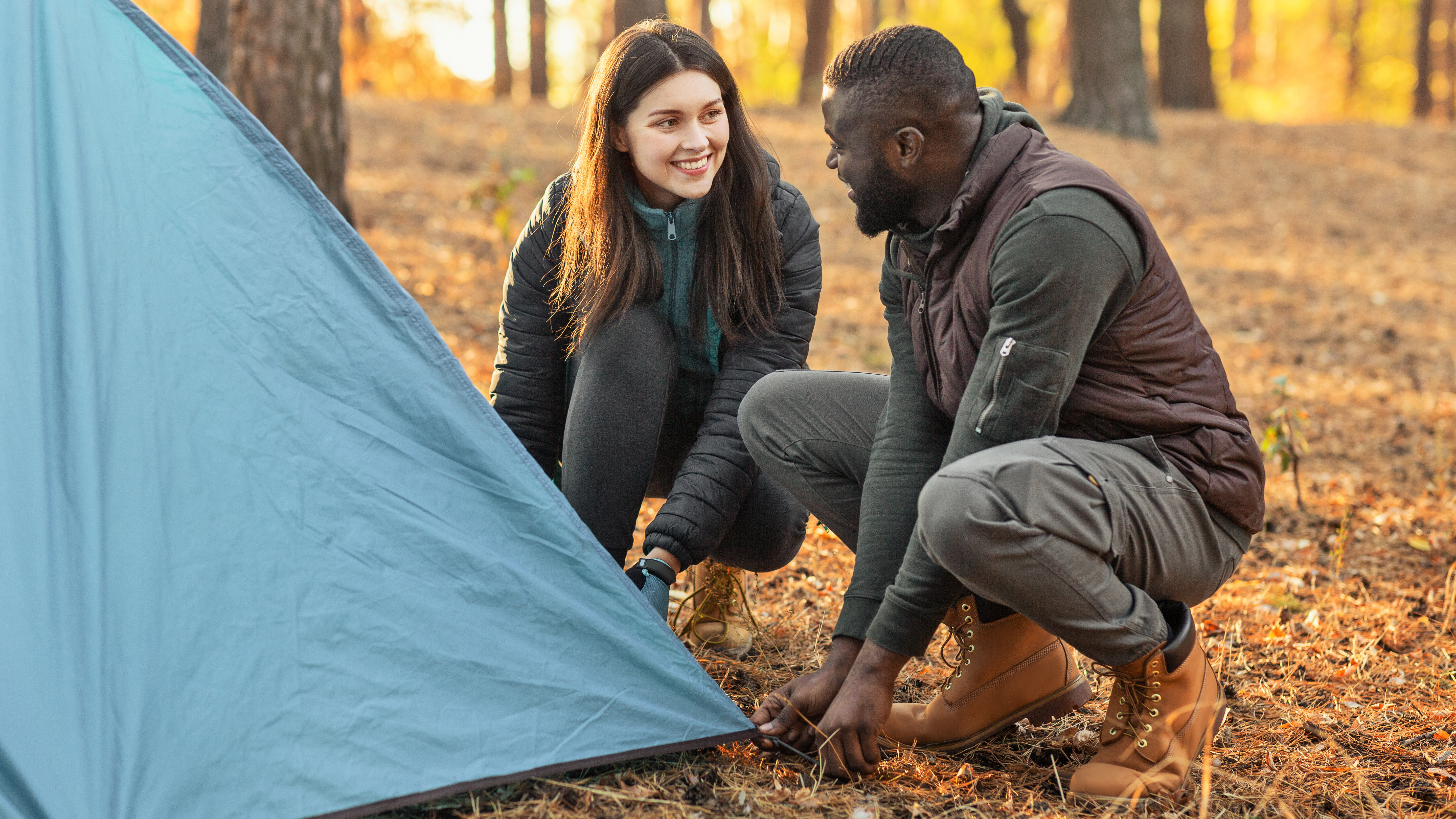
Weight and pack size
If you’re car camping, these considerations are less important, but you still need to ensure you can fit the tent in the car, along with all your kit and companions. If you’re backpacking, fastpacking or bikepacking, make sure the tent and poles are not too bulky to fit inside your pack. To maximise space efficiency, some lightweight campers prefer to pack the tent and poles separately.
If you’re backpacking with a partner or a group, split the tent up (poles, pegs, inner, flysheet) and carry it between you. A heavy tent will make a real difference to the overall weight of your pack – especially if you have to pack it away when wet, when it will be considerably heavier.
Value
To a certain extent, the old adage ‘buy cheap, buy twice’ is true. Cheaper tents may look similar in design to more expensive rivals, but they are typically made from poor-quality fabrics and components. The build quality is also unlikely to be as good compared to a reputable manufacturer. Large, inexpensive tents – such as those that are often abandoned at festivals – are difficult to recycle and have a significant environmental cost.
With this in mind, the best camping tent is the one you only have to buy once. Try to think of your tent as an investment and purchase one accordingly. Ultralight backpacking tents made from premium fabrics like Dyneema Composite Fibre (DCF) can come with big price tags, as can four-season or expedition tents designed to withstand extremely high winds and massive snow-loading. But unless you’re a committed adventurer, you don’t need to spend an eye-watering sum to get a decent tent for you and your family. If you look around, there are good value tents across all categories at cheaper price points. And it is always worth shopping around, because you can invariably pick up tents for far less than the list price.
Advnture Newsletter
All the latest inspiration, tips and guides to help you plan your next Advnture!
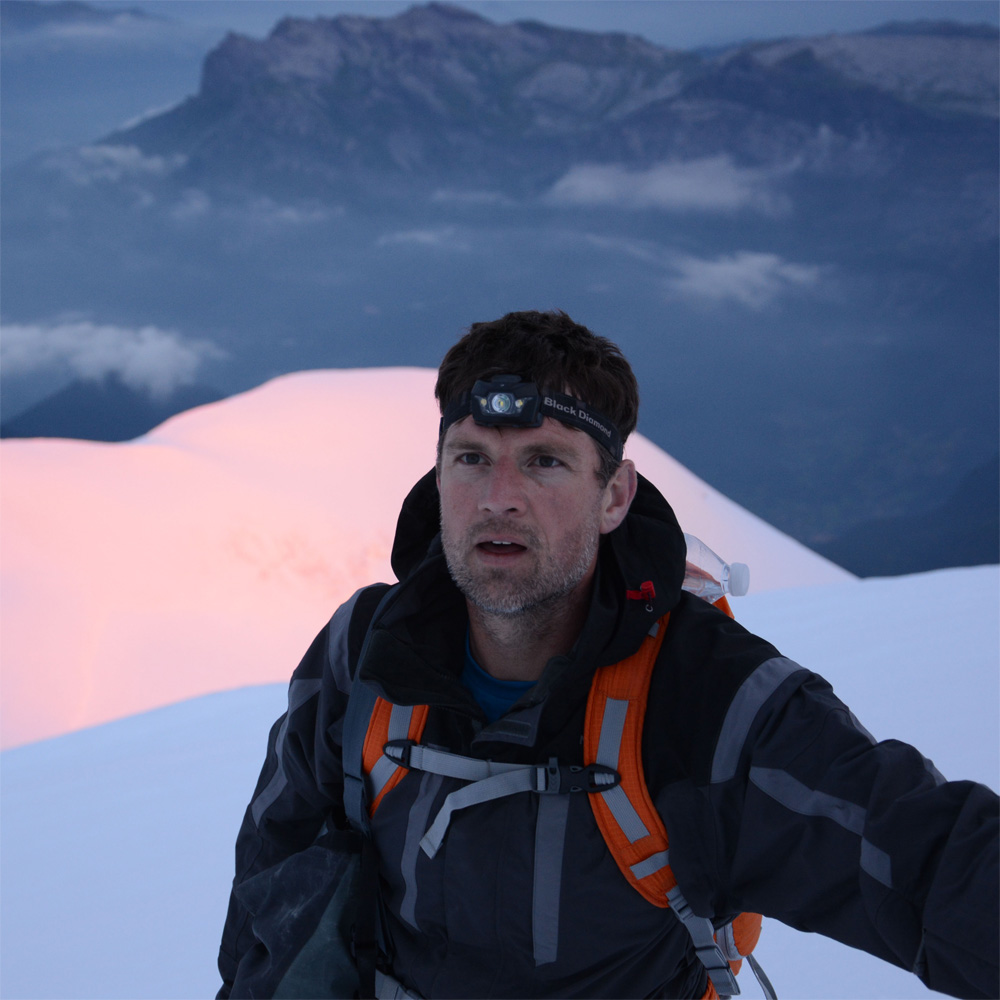
Author of Caving, Canyoning, Coasteering…, a recently released book about all kinds of outdoor adventures around Britain, Pat has spent 20 years pursuing stories involving boots, bikes, boats, beers and bruises. En route he’s canoed Canada’s Yukon River, climbed Mont Blanc and Kilimanjaro, skied and mountain biked through the Norwegian Alps, run an ultra across the roof of Mauritius, and set short-lived records for trail-running Australia’s highest peaks and New Zealand’s Great Walks. He’s authored walking guides to Devon and Dorset, and once wrote a whole book about Toilets for Lonely Planet. Follow Pat’s escapades on Strava here and Instagram here.
